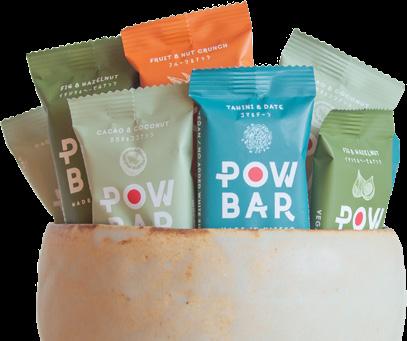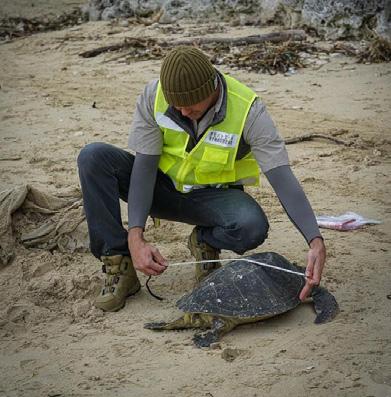
18 minute read
Okinawa Island Beat
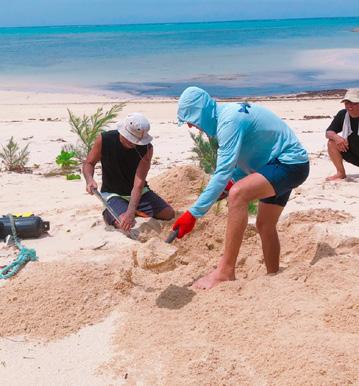
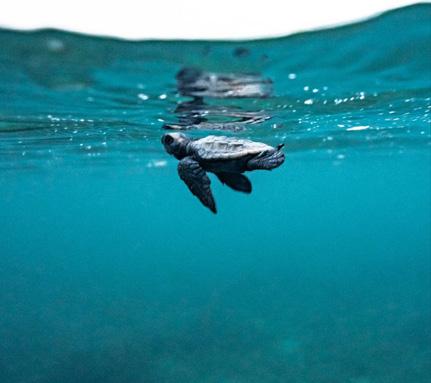
Advertisement
dedicated members, with the authority of local law enforcement and the village, were patrolling the coastline every morning and night during nesting season from May to August, making sure people were not disturbing the turtles or nests.
“Only one in a thousand turtles survive the journey from hatching to adulthood, so they can use all the help they can get,” Carl notes. “We’ve had nests too close to the shoreline and seen others in vulnerable locations destroyed by typhoons. Relocating the nest is a very slow, difficult process. Eggs have to be marked, numbered and put back in the same order or they won’t hatch,” he continues.
Churamura conducts monthly beach cleans at different locations throughout the island to clear the beaches of dangerous debris. They visit schools as part of their community outreach program and talk to students about turtle conservation. They also are starting up an Ocean Rangers program to educate youth about SDGs (sustainable development goals), being environmentally conscious and teaching them valuable ocean skills and responsibility.
These grass roots programs are crucial to get the message into people’s homes so kids can put pressure on their parents, local wives can put pressure on their husbands and local politicians feel the pressure and see conservation as good for business and long-term growth of the economy.
Over the next five years they plan to create a turtle rescue center that will serve as a hatchery and rehab center.
“About 80% of the turtles hatch if the nest is protected—safe from typhoons, camp fires, 4WDs and crabs getting into the nests. Twenty percent need help, which we can provide by nurturing them until they are big enough to avoid predators in the water, such as mahi-mahi which can devour a whole nest,” Carl says.
They also hope to help create a ranger network similar to the National Park and Wildlife Service with the power to enforce fines for littering and keeping parks and beaches clean. Ultimately Churamura’s mission is to create the first marine sanctuary dedicated to the protection of critically endangered sea turtles in Japan. It may seem like a long shot, but it is nothing compared to the odds the sea turtles face year after year.
If you’d like to help support the cause, Churamura has several ways to get involved. They welcome individual donations and can help facilitate CSR (corporate social responsibility) programs for companies looking to make a difference. For details visit churamura.org or visit their Facebook page for updates at facebook. com/churamura. v
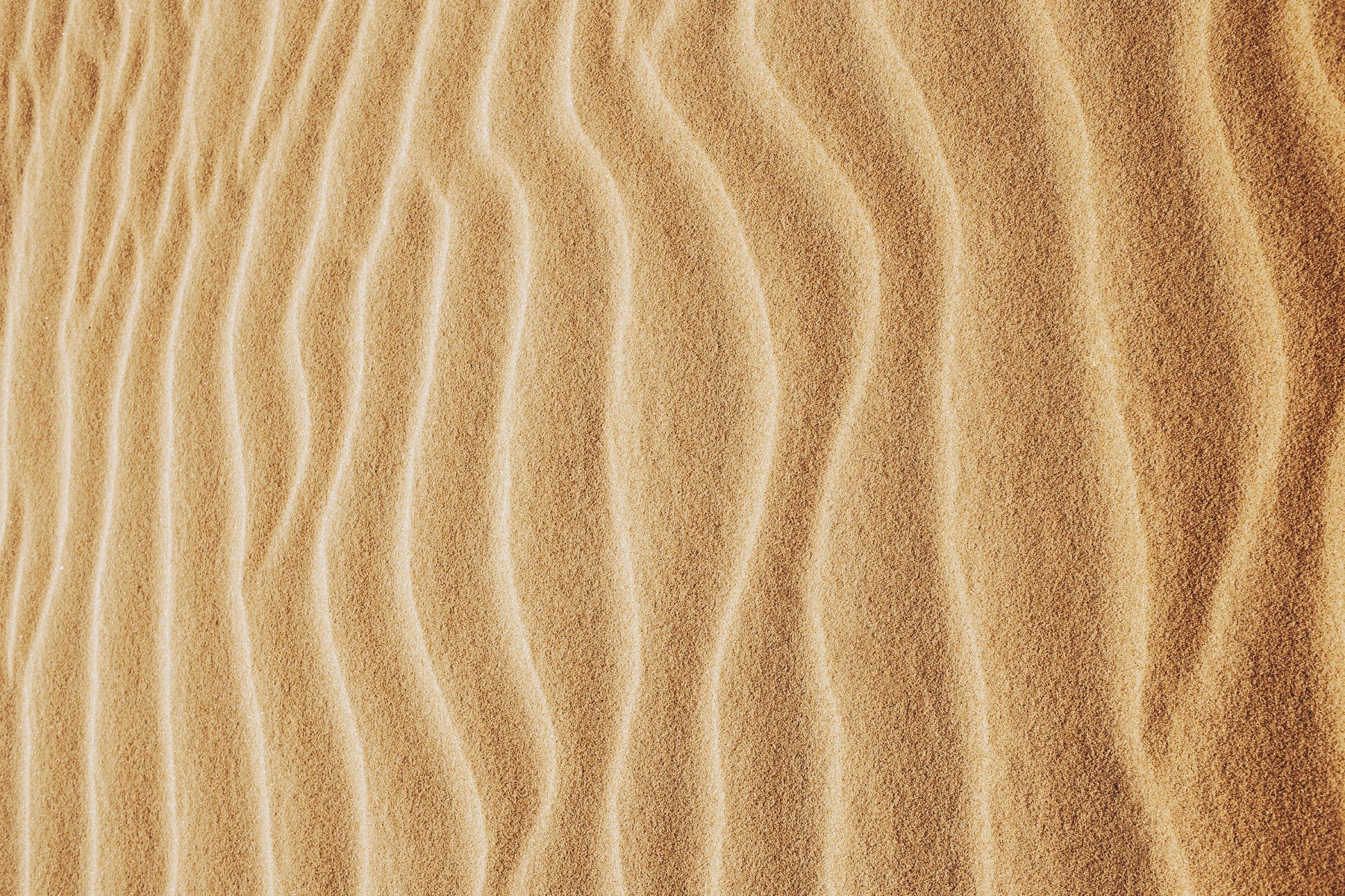
OKINAWA
ISLAND BEAT
Okinawa Whale Watching
If you are looking for something to do this winter that doesn’t involve sliding down a mountain, whale watching in Okinawa might just be your speed. Witness humpback whales and their calves in their natural habitat with Marine House Seasir’s experienced captains who know the best locations to spot whales while keeping a safe distance so as to not frighten them. Tours include digital copies of photos taken of the whales on your tour (free of charge) and round-trip pickup from your accommodation.
Seasir is a Naha-based company guiding fun, safe tours to visitors in Okinawa since 1983. Whale watching boats go out every day from mid-January to March with half-day tours starting at 8 a.m. and 1 p.m. lasting about three hours. Price is ¥4,500 for adults and ¥3,500 for children.
To book, call (098) 869-4022 or visit seasir.com.
Fun Diving in the Keramas
The Kerama National Marine Park features some excellent water visibility (30 to 40 meters), a rich diversity of marine life and is home to 248 species of corals. Join a full-day tour with Seasir, a PADI 5-Star Instructor Dive Resort that is part of the Japan Recreational Diving Association. All instructors are licensed professionals. Fun dive tours are available for first-time to advanced divers (who go out on different boats for increased safety and comfort) and a level check is done if it is your first visit. Advanced divers can opt for drift diving and night diving tours as well. Tours depart at 8 a.m. and are ¥16,480 per person.
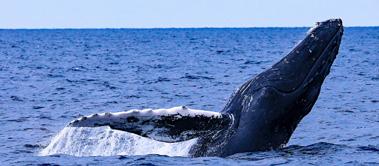
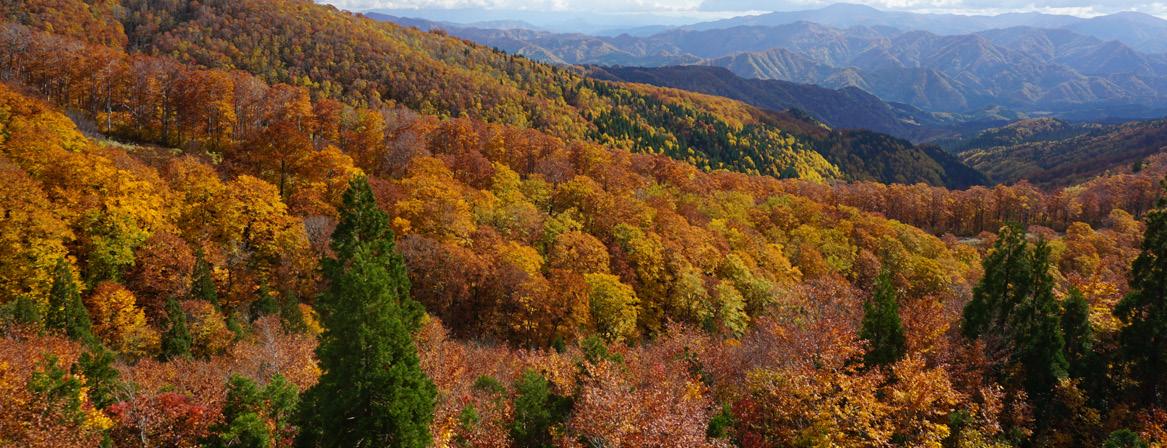
TRACKING AKITA'S Matagi Hunters
BY RIE MIYOSHI

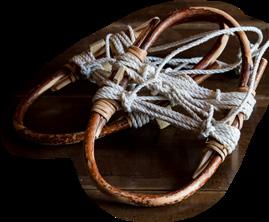
Achilly breeze runs through the deep forests of Mt. Moriyoshi, signaling the coming winter for the Matagi. Ani Village is said to be the spiritual home of the Matagi, Akita’s traditional bear hunters who follow 400-year-old sacred rituals for living and hunting in the rugged northern mountains.
Legend has it that a young hunter saved a mountain goddess from another deity that had taken the form of a giant snake. He was rewarded with a scroll granting him and his descendants the right to hunt throughout Japan.
The name “Matagi” is said to have many meanings and origins, and its culture shares many similarities with the Ainu of Hokkaido. For example, in the Ainu language, matangi or matangitono means “man of winter” or “hunter.” The name is also said to depict the abundance and nature of the four seasons. The Matagi practice kebokai, a ritual to give thanks for the bear and return it to its ancestors, similar to the Ainu iyomante bear sacrifice. They practiced sustainability and zero waste long before these buzz words became ubiquitous with marketing professionals.
The Matagi continue to treat their hunting grounds with awe and respect. Before every hunt, they go to the temple to pray for protection and offer morobi made of fir branches. The morobi is smoked; its scent is said to ward off impurities and evil and remove the smell of the village from the hunter’s body.
When hunting a bear, the Matagi enter the forest, usually in a group of eight, and work together to track and hunt the creature. This can take up to twelve hours. Apart from the rifle, they also use traditional tools like the nagasa, a machete-knife tool, and kanjiki, traditional snow shoes made out of straw and ropes. The bear is killed as swiftly as possible, usually in one shot, so as to cause the least suffering. Its meat is divided equally between the hunters and part of its intestines is left as an offering to the mountain. Every part of the bear is used and the Matagi never hunt more than needed.
There used to be around 120 Matagi in the Moriyoshi area of Ani Village. Today, that community has dwindled to 20, mostly elderly hunters. The youngest member of the group is the enterprising Hideyuki Oriyama. The 38-year-old Matagi was born and raised in Akita, and like most Japanese youths, moved to Tokyo for work and to pursue a career in video production.
During the 2011 Tohoku earthquake and tsunami, Oriyama struggled to find basic needs like diapers for his then three-month-old daughter; his parents in Akita sent them diapers and food for a month. He quickly realized Tokyo didn’t have its own resources and within four months, he packed up his family and went back to Akita.
When he returned, a friend introduced him to Kaiko no Mori, a novel about the Matagi. Curious about this culture and how close it was to home, Oriyama arranged to walk the mountains with a Matagi guide. He was so inspired by this traditional lifestyle, he chose to try and become a Matagi himself.
“Matagi culture is something you learn and experience by being part of the community and learning from other Matagi,” says Oriyama. “There isn’t any course or certificate, or any point where they suddenly announce that you’re a Matagi.”
Becoming a Matagi means it affects your everyday life: living self sufficiently, being careful, focusing on exact in movements, understanding the mountains and nature, and most importantly, revering the spirituality. Oriyama experienced this first hand on his first hunt.
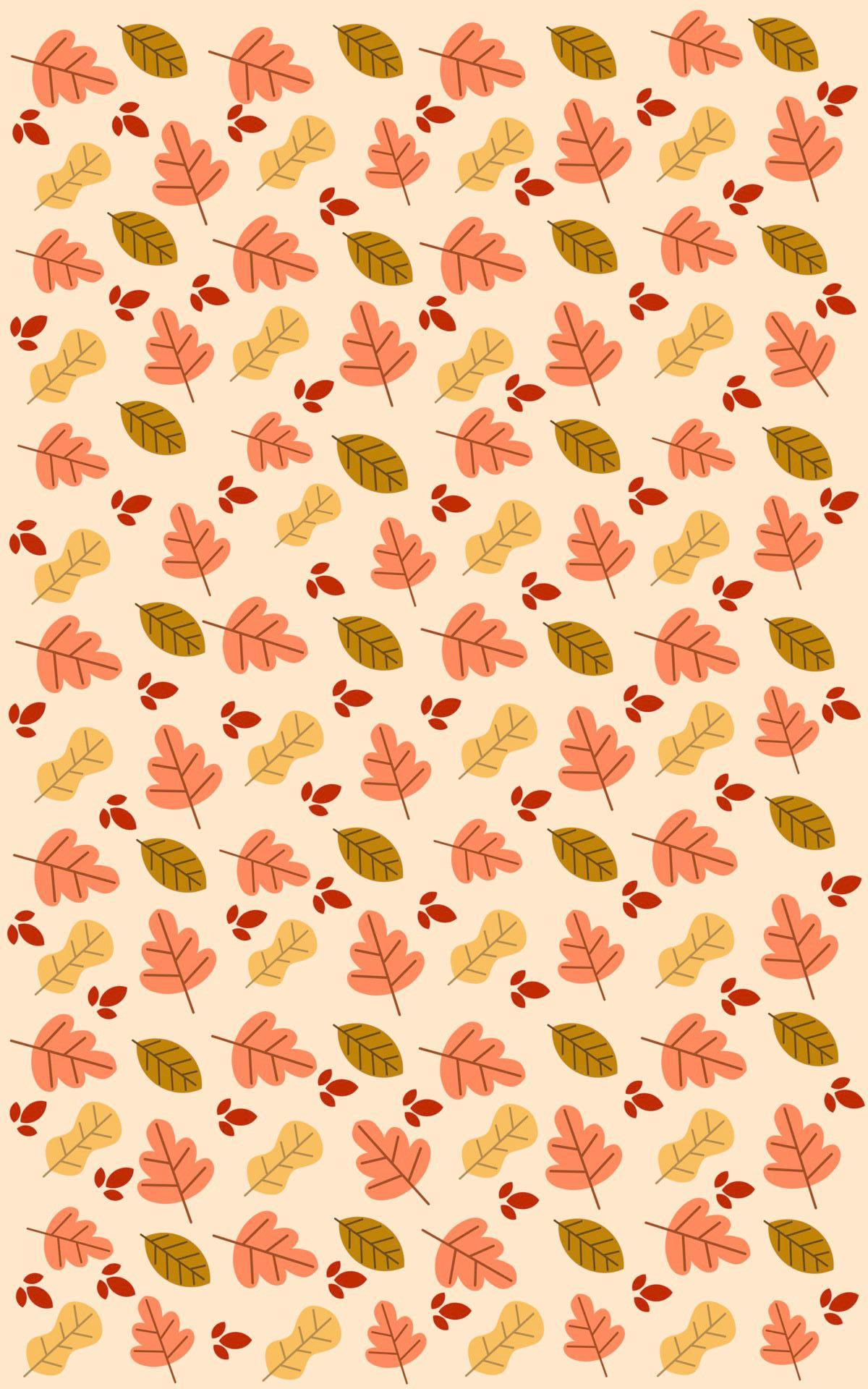
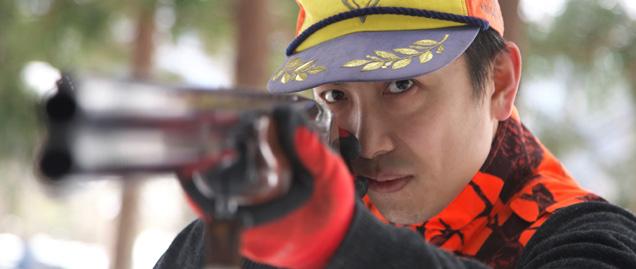
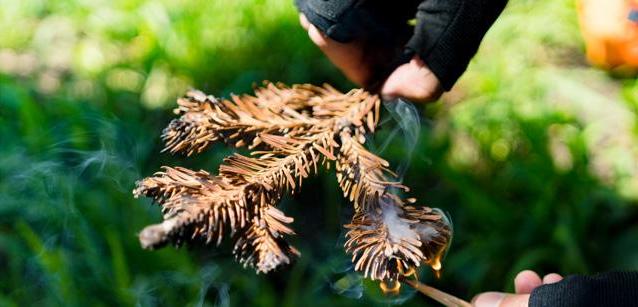

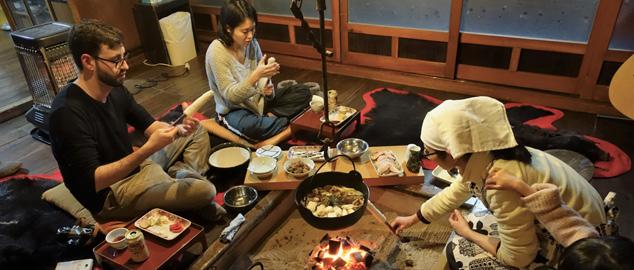
“After hours of tracking, we finally found the bear. We were ten meters apart; I was so nervous staring into its face. Just then, the bear turned its head away and angled the back of his neck at me. I felt like it understood what was going on, and gave me permission to shoot,” remembers Oriyama. “I felt very thankful and was in awe at the power of nature.”
In 2018, he opened Oriyamake, a guesthouse where travelers can experience Matagi life and participate in workshops. Oriyama wanted to raise awareness of this dying tradition and change assumptions about Matagi.
“People think that all we do is hunt bears, but we actually only hunt them less than two months of the year: in early winter before they hibernate and early spring when they wake up,” says Oriyama. “The rest of the year we're taking care of the forest. In spring, we’re foraging for mountain vegetables, fishing in summer and picking mushrooms in autumn.”
Oriyamake has garnered the attention of inbound visitors, and Oriyama hopes he can continue sharing the legacy of this local tradition when international borders open back up. He also hopes to hire young people and teach them about Matagi, as there has been increased interest. The guesthouse is open year round and offers a plethora of activities from mushroom picking in autumn, canoeing, stargazing, making local delicacies kiritanpo and butter mochi, knife making, animal tracking and barbecuing game they’ve hunted, such as deer and pheasants. To book your stay, visit oriyamake.com.
HIGHLIGHTS
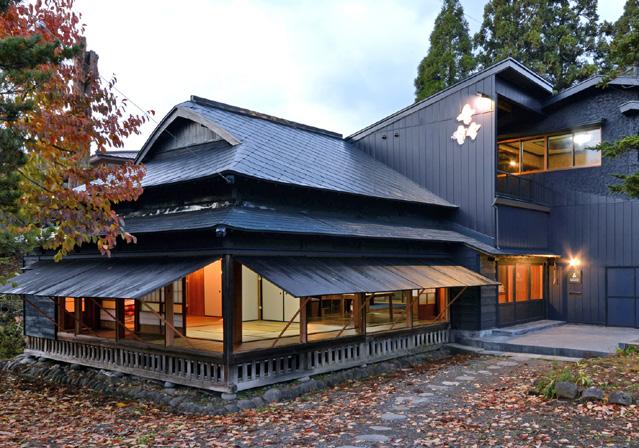
Matagi Museum and Matagi-no-Yu
This museum displays authentic Matagi items such as hunting tools and clothing. The adjacent Matagi-no-Yu’s all-natural hot spring is fed directly from the source.
Akita Dog Visitor Center
Animal lovers will recognize the name “Akita” from the famous Hachiko story. Akita dogs are large, powerful, yet affectionate dogs originating from the Odate area. In the past, they were used for guarding royalty and assisting on hunts. Located outside Odate Station, this center features a Akita dog museum, gift shop and, best of all, an area to meet the dogs themselves.
Mt. Moriyoshi
At 1,454 meters high, this mountain is one of the highest points in Akita and is famous for juhyou, “snow monsters” formed by ice sticking to trees making the forest look like a Yeti army. The best time to see this phenomenon is January and February at Ani Ski Resort. Other peak visiting seasons are May to July for the wild flowers and October for kouyou. Although closed in winter, Moriyoshi Ski Resort's lift runs in the off season from 9 a.m. to 4 p.m. for hikers.
Ani Ski Resort
This hidden gem of a ski resort is located on Mt. Moriyoshi and has it all: powder, tree skiing, minimal crowds, and snow monsters in mid-winter. The ski season runs from early December to late March. Don’t forget to say hi to the resident Akita dog Hokuto.
Yasu Falls
This two-tiered waterfall is a 90-meter drop in the upper reaches of the eight-kilometer stretch of Nakanomata Gorge. It is exceptional in early to mid-October during kouyou season when the leaves change color.
Lake Taihei
Another popular spot to view the autumn leaves is this artificial lake created along with Moriyoshi Dam. Anglers enjoy this lake for its abundance of cherry salmon, char, carp and pond smelt.
Local Delicacies
Warm up with kiritanpo, freshly cooked rice pounded and formed into cylinders, skewered and toasted. They are then served with sweet miso or stewed with meat and vegetables. Apples are also famous during this season.
GETTING THERE
From Tokyo, Haneda Airport to Odate Noshiro Airport takes just 70 minutes. By shinkansen, take the Tohoku-Hokkaido or Akita bullet train to Morioka Station (two hours and ten minutes), then the Shuhoku bus for Odate (two hours and twenty minutes). You can also take the Tohoku-Hokkaido bullet train to Kakunodate Station, then take the scenic Akita Nairiku Line Railway (two hours and 30 minutes) to Takanosu Station. For more information, go to visitakita.com. v
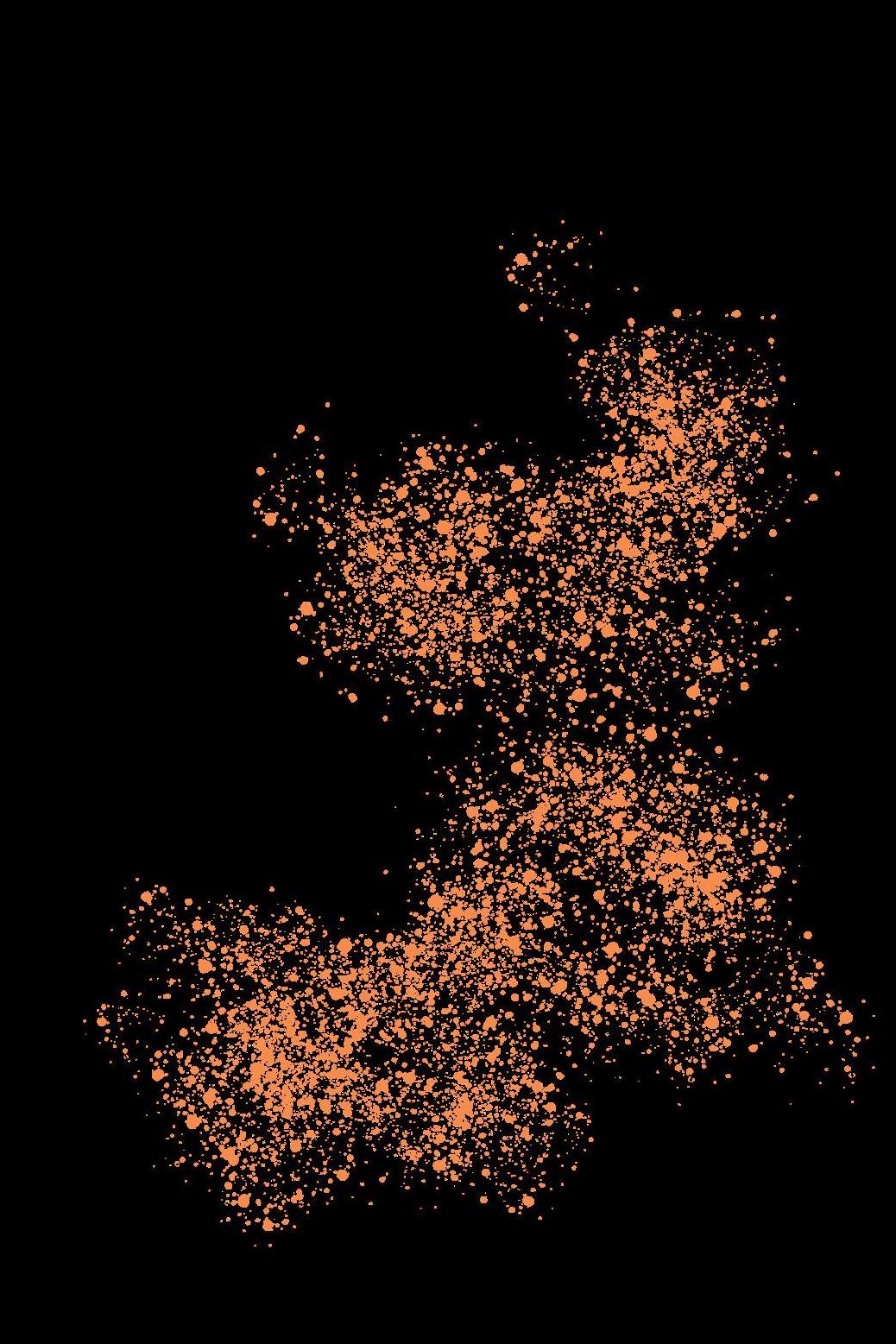
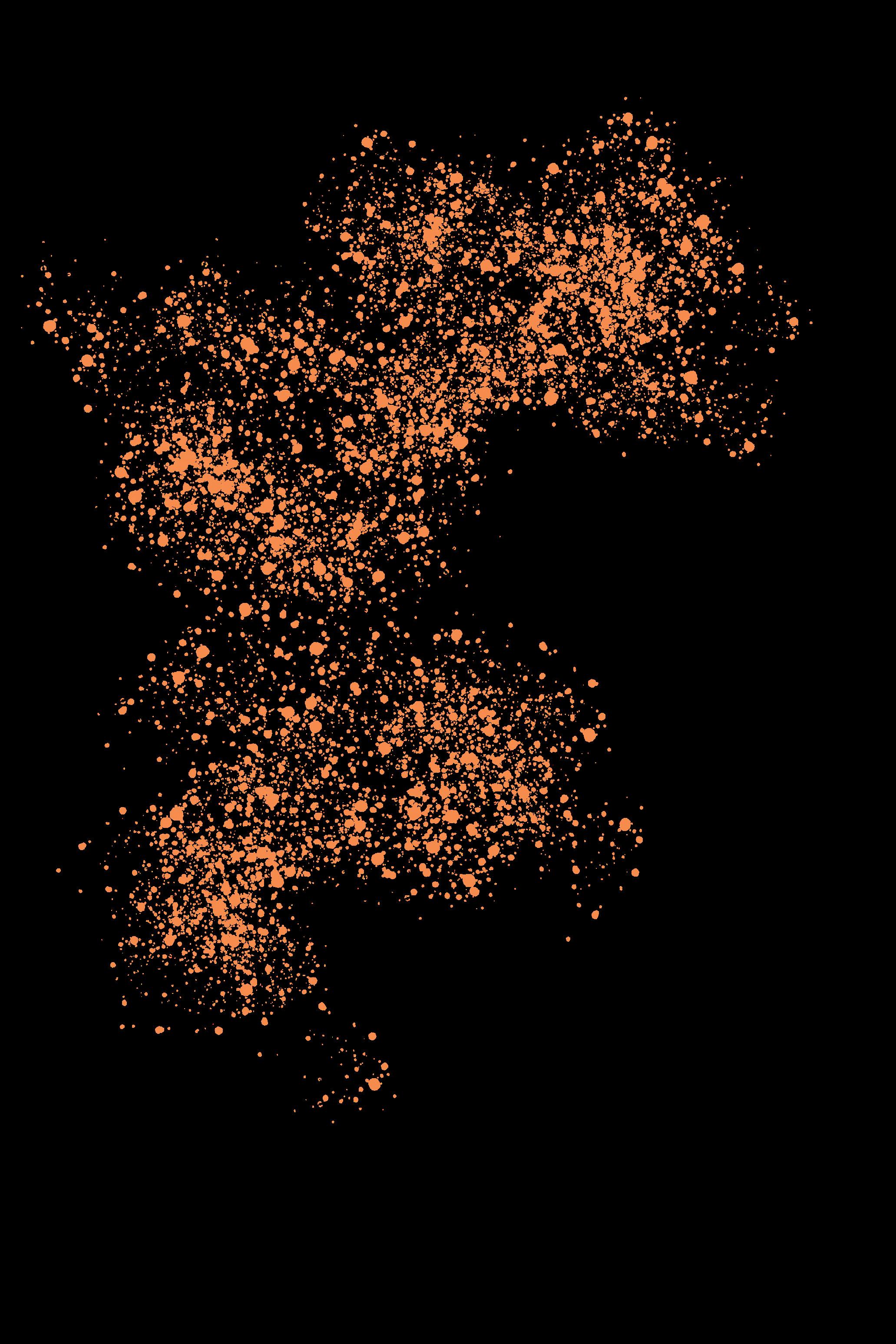
BEYOND THE BRAND
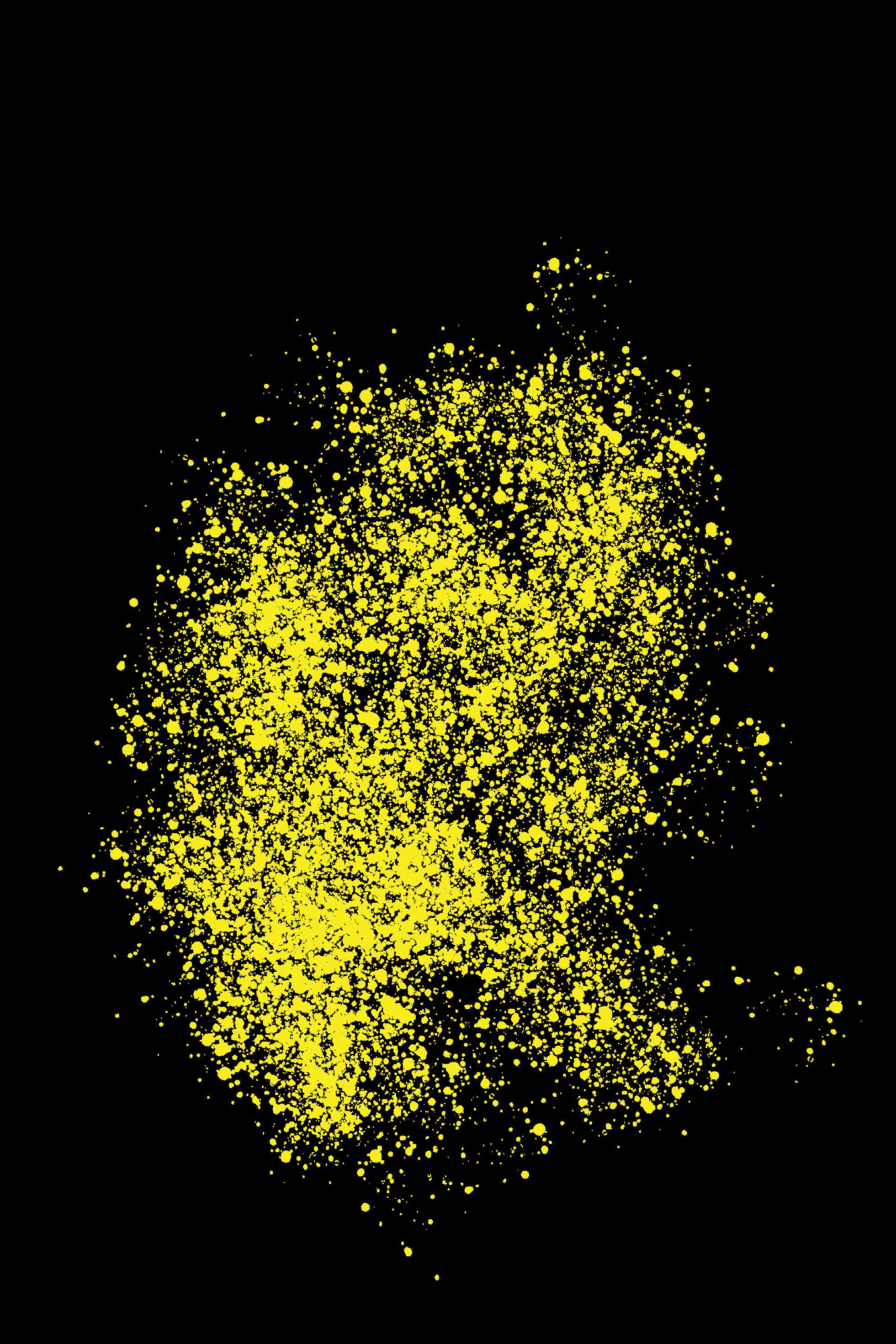
INTERVIEW WITH POW BAR FOUNDER MEGUMI SCOTT


WITH BRAD BENNETT
Growing up in Koshimizu, near the Shiretoko Peninsula in Eastern Hokkaido, Megumi Scott spent a lot of time outdoors hiking and camping with her parents and older brothers. As she became more serious about hiking, she started taking notes about her trail mixes, nutrition and the effects they had on her body. This was the beginning of her journey to test the limits of "fuel for movement.”
She noticed a lot of foreign and domestic energy bars had too much sugar and processed foods, including dairy products. Combining her passion for the outdoors, literature and healthy food—and with help from Sam’s Bike Shop in Sapporo and their licensed kitchen—she set out to create a healthier alternative. Brad Bennett: When did you discover your passion for food and the outdoors? Megumi Scott: I was led to this path early. My father loves the mountains and from a young age we would spend weekends hiking and camping in Hokkaido's mountains. My mother loves cooking and baking and by age six, I was helping her in the kitchen. She said I would sneak into the kitchen and try to make things on my own. BB: And this continued as you got older? MS: Yes, when I was young I could remember everything about any children’s book that had food in it. I studied Japanese literature at university and I kept getting drawn to books that mentioned food. I started searching out old books that referenced food and diets. In my fourth year, I wrote my final paper on traditional Japanese diets and foods. My professor was surprised by the topic I researched, but I passed. BB: Did this lead to work in food or nutrition? MS: No, after university I worked for an outdoor company. There was a strong mountain culture and the staff were pros. When I first began hiking with these serious mountain people I was very tired and it was difficult to keep up. I wanted to increase my skills and knowledge of the mountains so I could enjoy it more and be better at my job.
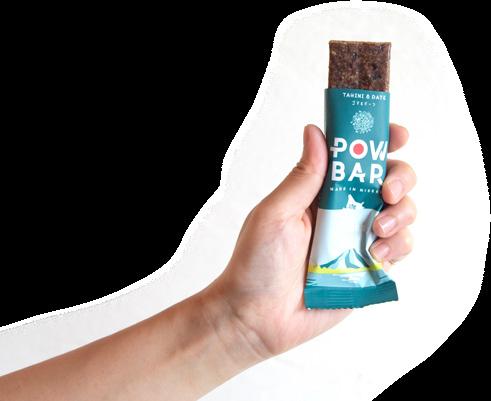
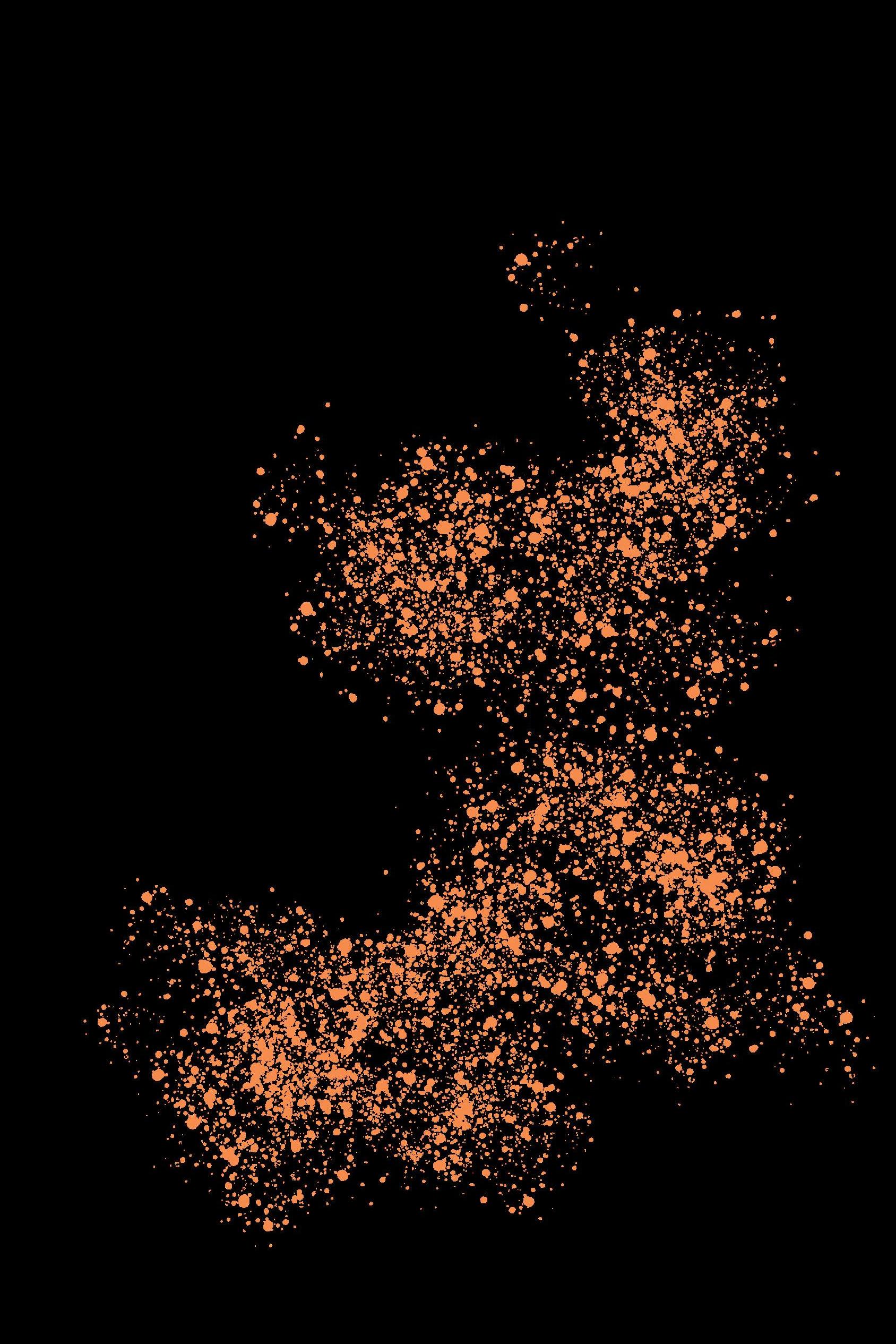

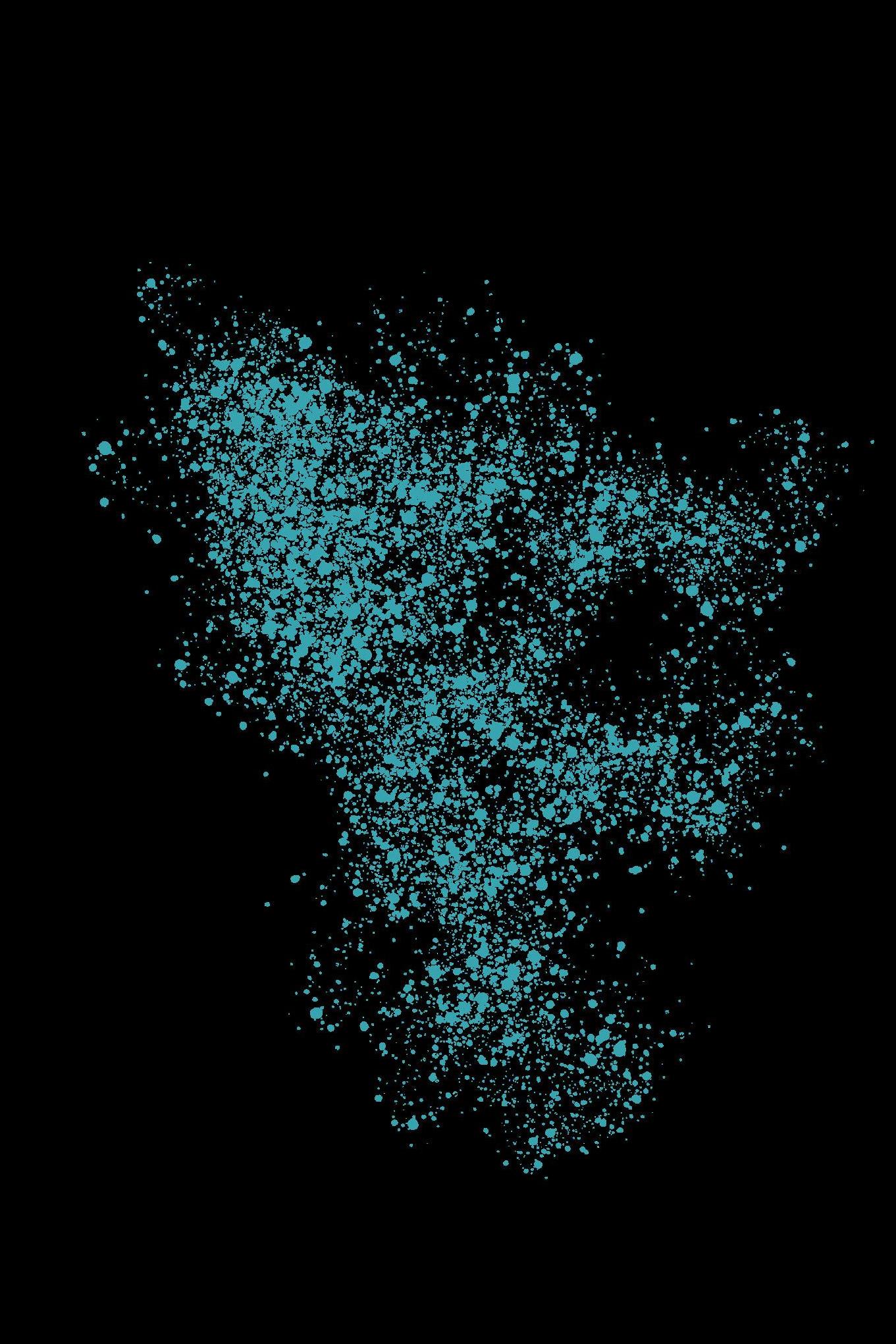


I set a goal to do a multi-day solo hike, focusing first on my gear and cutting weight with more technical (and expensive) equipment. After spending a lot of money on better, and lighter gear, I still wasn’t satisfied. Then I started thinking about my body, noticing how I was breathing while pushing hard. How was my body feeling? How did I feel after eating different foods—a rush of energy then a crash, even balanced energy? Was my stomach upset? BB: Searching for the perfect “fuel for movement.” MS: Yes, while I was thinking about how food affects performance while being active, I remembered a story from 150 years ago. The Japanese government invited a German doctor to Nikko in Tochigi Prefecture. On his first trip from Tokyo he was taken by horse-drawn carriage. The horses needed to be changed six times during the journey. The second trip, he was carried by messengers who traveled fourteen hours over mountain passes without stopping. He noticed they were only eating brown rice onigiri, sour plum, pickles—simple, whole food diets.


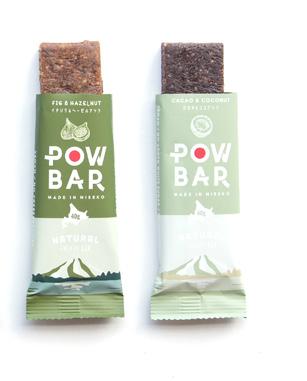
He was amazed, but thought they could be even stronger if they ate meat. He asked if he could experiment with their diet. Once he introduced meat into their diet, they could no longer travel the same distance, so they changed back to their normal diet. I thought about the Japanese diet today compared to this simple diet of the past. We have so many choices, many with additives to help my performance. But, are they better than the simple, natural foods?
I started to test my body during hiking. What foods worked for long distances? Could I strip away unnecessary foods? I noticed I felt bad when I ate most energy foods available from outdoor shops (gels, energy bars, powders etc.) or sweets and normal snacks at the combini. BB: The beginning of the Pow Bar journey? MS: Yes, I continued to study food, and learned about sugar balance in the blood. You also need good minerals and nutritional balance to perform well. I began looking at natural ingredients and noticed they naturally have this balance. You don’t need to add anything to get it.
I began eating only natural products, like nuts, dried fruits and kombu while hiking. I started feeling great; I didn’t get tired so easily and felt both mentally and physically more energized. At the same time my energy levels felt more stable and balanced, instead of having a big energy boost, then crashing.


BEYOND THE BRAND
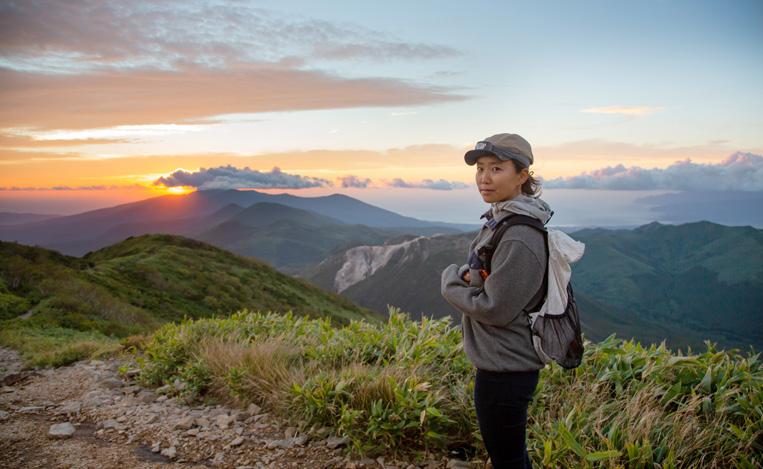

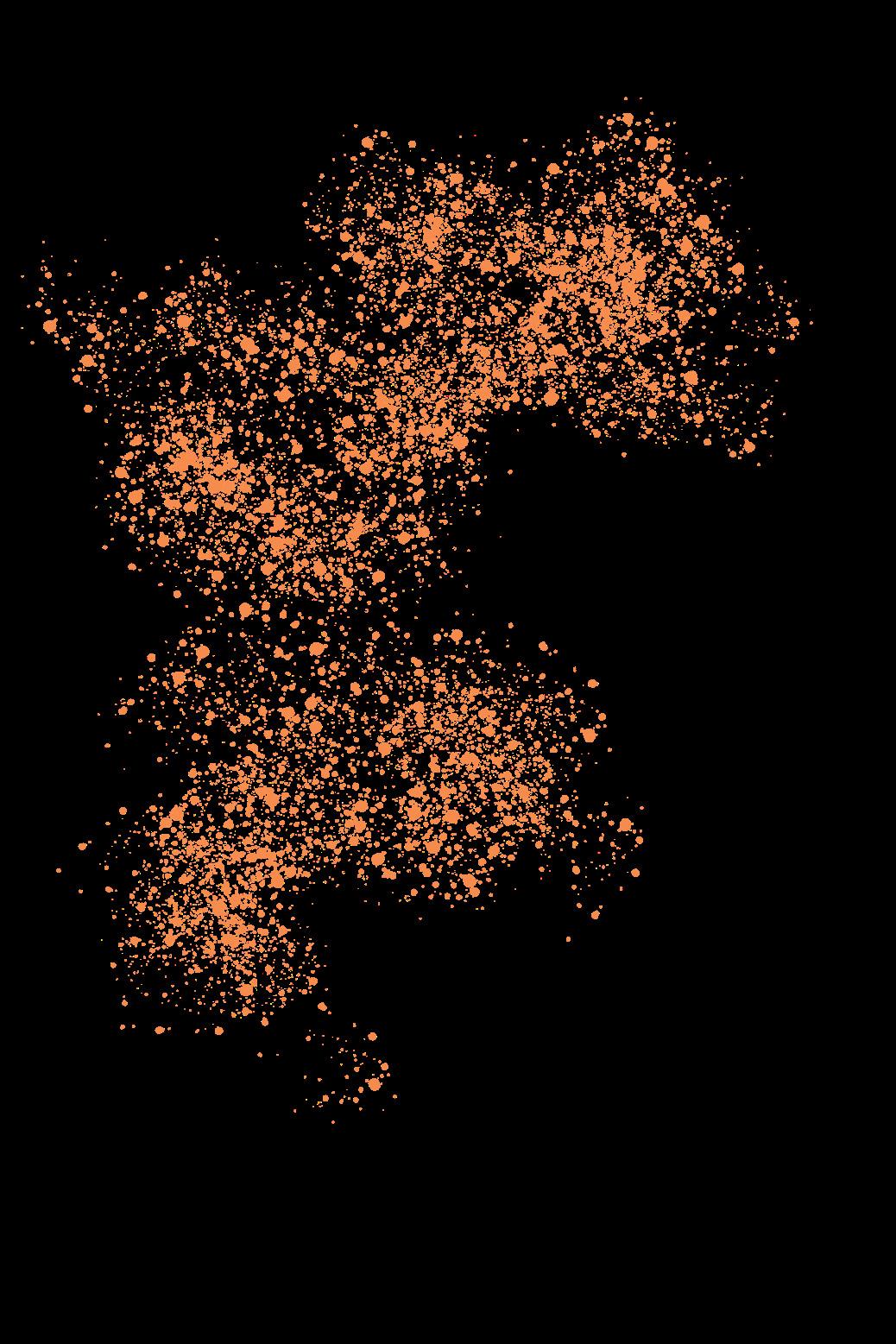
I also changed from sports drinks to water. If I eat weird and unnatural ingredients, I can sometimes get a quick boost, but afterwards my body must work hard to digest and break down these things. Once I noticed my body ran more efficiently with these natural ingredients, I started to test and refine the best combinations and ratios of these ingredients for hiking, while aiming for something convenient and easy to carry in the mountains. BB: What were you looking for? MS: I wanted to create a bar made with natural and vegan ingredients, something professional athletes would use—if pros would can eat it, then everyone would, I thought. I wanted it to be easy to chew and swallow while working hard (something that wouldn’t stick in your mouth and teeth or make my jaw hurt from chewing too much). And I didn’t want the bar to melt or get too sticky in summer or freeze and become hard in the winter. BB: Was it difficult to find the right combination? MS: First, I tried trail mixes with dried fruits and nuts. This worked much better than other mountain food available, but, to make it easier to digest, I tried grinding all the ingredients together to make a bar. This was better to chew and swallow while exercising, and also easier on your stomach. After making several flavors that performed well and tasted great, I began shaping them into bar sized portions so they were convenient to take into the mountains. BB: How were those initial Pow Bars received? MS: Friends and acquaintances started asking for the bars and then some small specialized outdoor shops. Since then, we have been steadily growing, and hope to help many people find easily accessible energy food that is good for their body. BB: What flavors are available for people wanting to try Pow Bars? MS: We developed four flavors, each distinct in taste to keep your mouth interested depending on your mood, season or preference.
I'm very sensitive to how I feel while eating food, so Pow Bar flavors and packaging correlate to seasonal feelings while out in nature. Fruit & Nut crunch is like a sunset or sunrise in the mountains. Cacao & Coconut feels like a blanket of snow over the mountains—the rich chocolate taste is nice in winter. Tahini & Date is a fresh river in spring and blue sky in the mountains. Fig & Hazelnut feels like a lush green forest in summer (moss, ferns, trees). BB: What’s next? MS: Our goal for the future is helping educate people about what they eat, how it affects their performance and how they feel. We would also like to be a path towards positive social change—natural ingredients that are ethically sourced, sustainable packaging (using less plastic) and an environmentally conscious manufacturing process.
POW BAR
The Pow Bar Cafe opened in Niseko Town in 2019, serving up tasty and wholesome food, using only the best natural ingredients. If you’d like to try Pow Bars, visit their website or look for them at your favorite outdoor shop or heath food store. Address: 77-16 Aza Motomachi, Niseko-machi, Abuta-gun, Hokkaido 048-1511 Phone: (0136) 55-6739 E-mail: info@thepowbar.com IG/FB: @thepowbar thepowbar.com v


